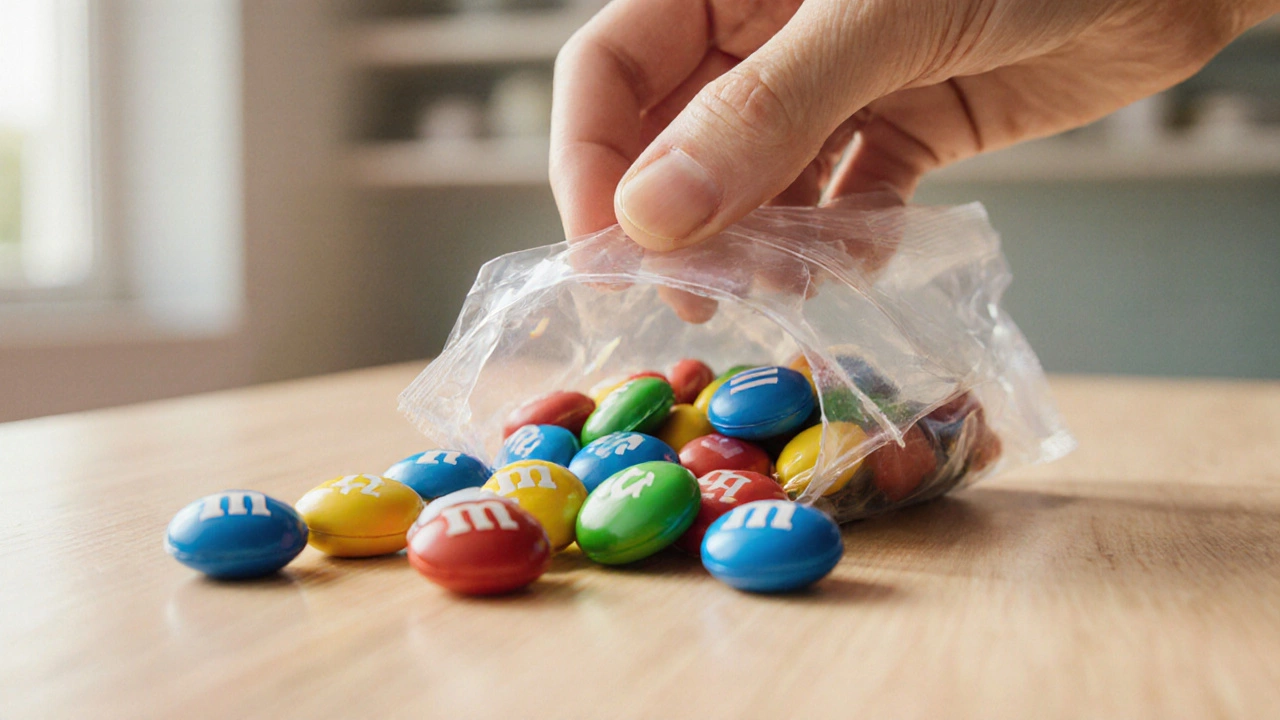Vegan M&Ms: Are They Real? Ingredients, Alternatives & How to Spot Them
Discover if vegan M&Ms exist, learn to read labels, explore vegan alternatives, and get a DIY recipe for plant‑based chocolate‑coated treats.
When talking about vegan M&Ms, a version of the popular candy that contains no animal‑derived ingredients. Also known as plant‑based M&Ms, it offers the same crunchy shell and chocolate center while keeping a strict vegan diet intact.
Understanding M&Ms, the small, candy‑coated chocolates created by Mars Inc. is the first step. Traditional M&Ms rely on milk‑derived chocolate, so they don’t qualify as vegan. The shift to plant‑based chocolate, chocolate made without dairy, using cocoa butter, cocoa mass, and sugar enables a cruelty‑free version. This change means the core ingredient attribute moves from “contains dairy” to “dairy‑free,” which directly influences label wording and consumer choice.
Why does vegan candy, any confection that excludes animal products matter? For many, it’s about ethics, health, or allergy concerns. Vegan candy requires careful sourcing of each component: the cocoa butter must be pure, the sugar should be non‑bone‑char processed, and any colorants need to be plant‑based. When these criteria are met, the product can be certified vegan, and the certification logo becomes a reliable shortcut for shoppers.
First, scan the ingredient list for dairy terms like “milk,” “casein,” or “lactose.” Next, look for a “vegan” symbol or a statement from the manufacturer confirming dairy‑free status. Third, verify the sugar source; if it says “organic” or “unrefined,” it’s often non‑bone‑char, but the safest bet is a clear vegan label. Finally, keep an eye on color additives—some, like carmine, are animal‑derived, while others, such as beetroot red or turmeric, are plant‑based.
These steps create a simple decision tree: vegan M&Ms are possible when the chocolate is plant‑based, the sugar is non‑animal, and all flavorings are free from animal derivatives. If any link in that chain is missing, the candy doesn’t meet vegan standards. This logical flow mirrors the semantic triple “vegan M&Ms requires plant‑based chocolate” and “food labeling influences consumer choice.”
Beyond the standard lineup, several brands now offer vegan‑friendly alternatives that mimic the classic M&M experience. Some use soy‑based or oat‑based milk alternatives in the chocolate, while others replace the candy shell with a glaze made from natural fruit extracts. These products illustrate how the market responds to demand for ethical sweets, expanding the range of options for vegans and flexitarians alike.
For home bakers, creating your own vegan M&Ms is a fun project. Start with vegan chocolate chips, melt them with a splash of coconut oil, dip almond‑based or soy‑based mini‑marshmallows, then roll them in a vegan candy coating. The result is a custom batch that meets all the same criteria you’d check on a store‑bought label.
In short, navigating vegan M&Ms is about understanding the ingredients, reading the labels, and knowing which certifications to trust. Below you’ll find a curated list of articles that dive deeper into each of these areas—whether you’re looking for label‑reading tips, ingredient breakdowns, or DIY recipes, we’ve got you covered.

Discover if vegan M&Ms exist, learn to read labels, explore vegan alternatives, and get a DIY recipe for plant‑based chocolate‑coated treats.